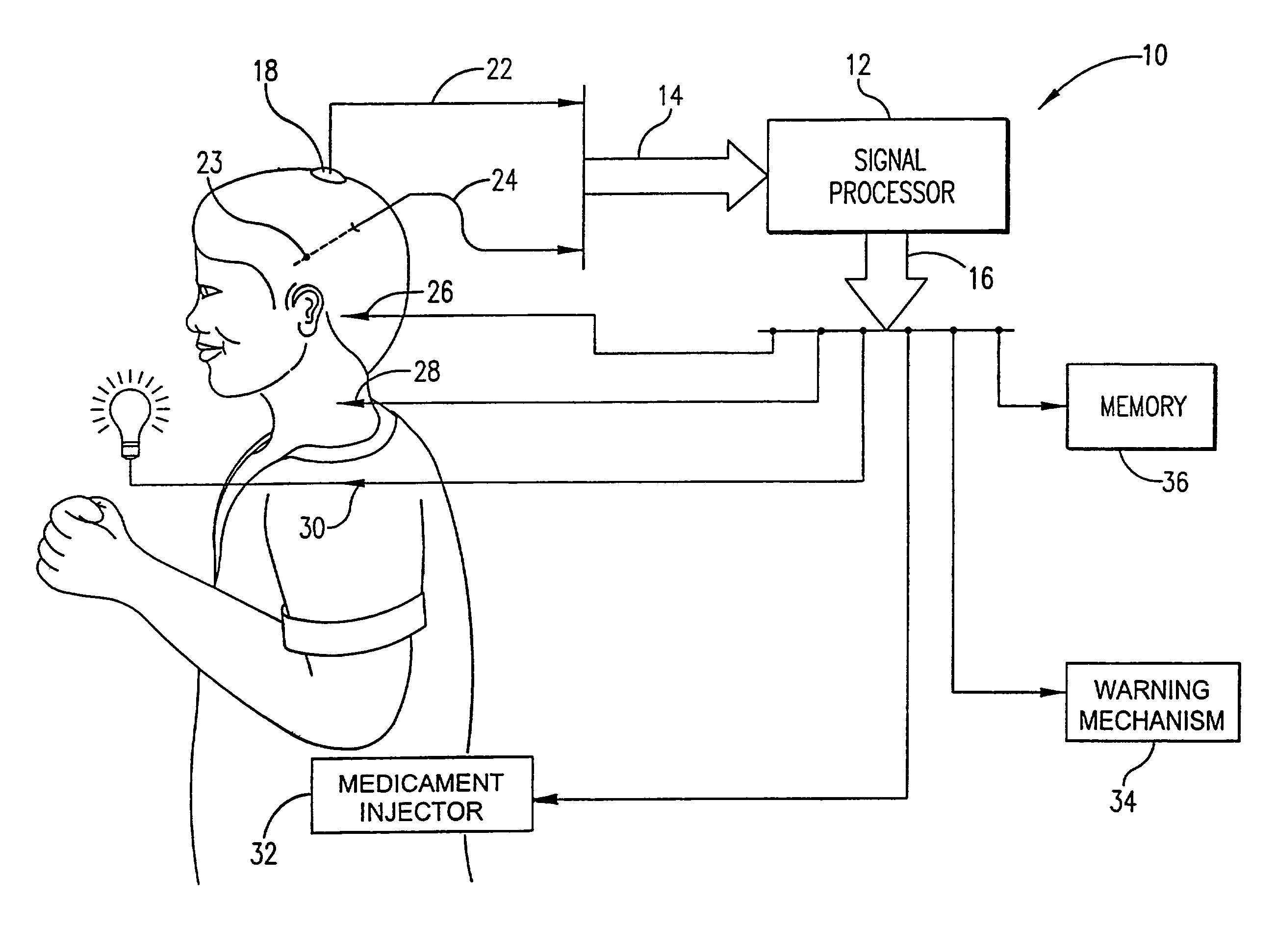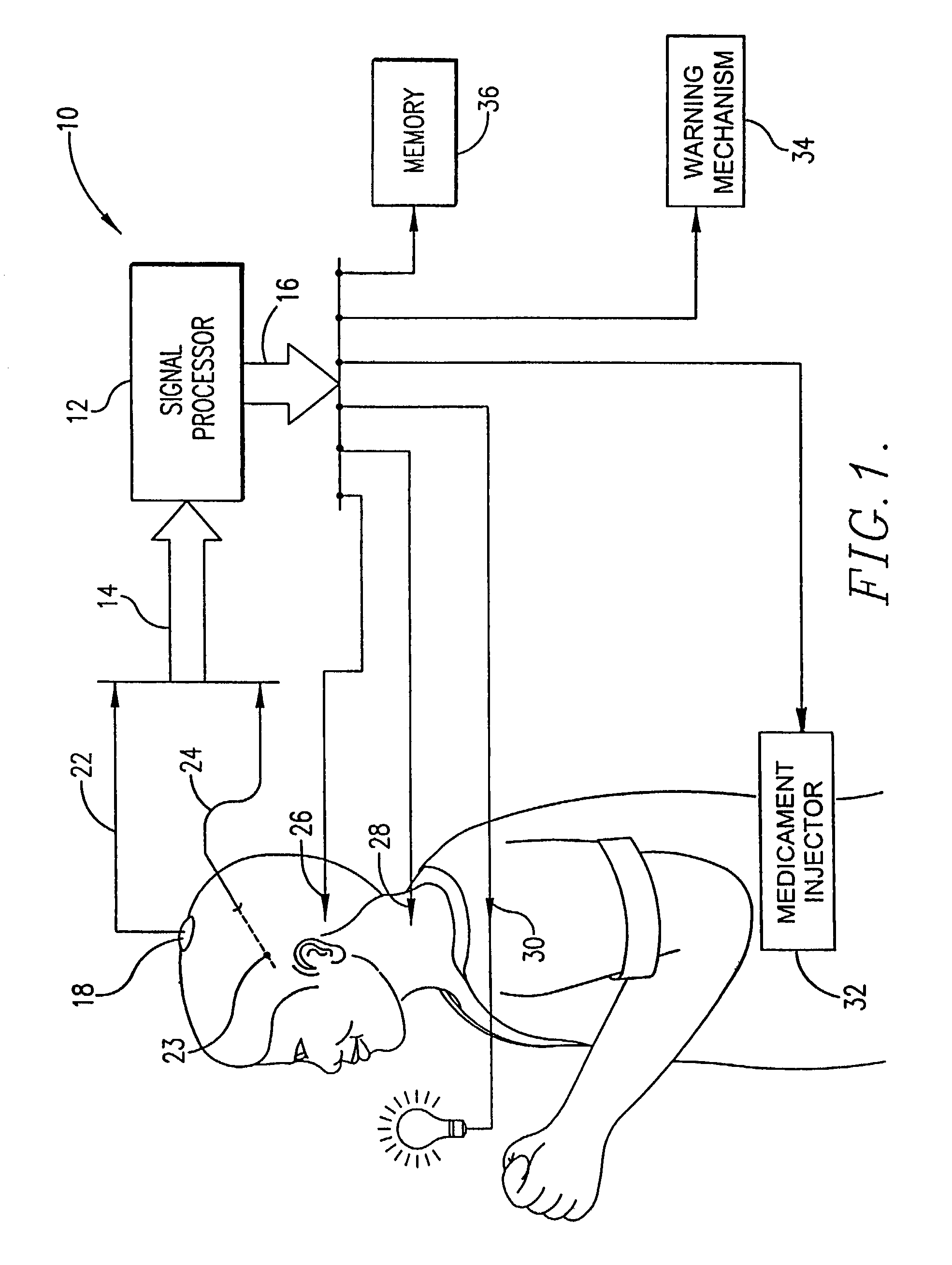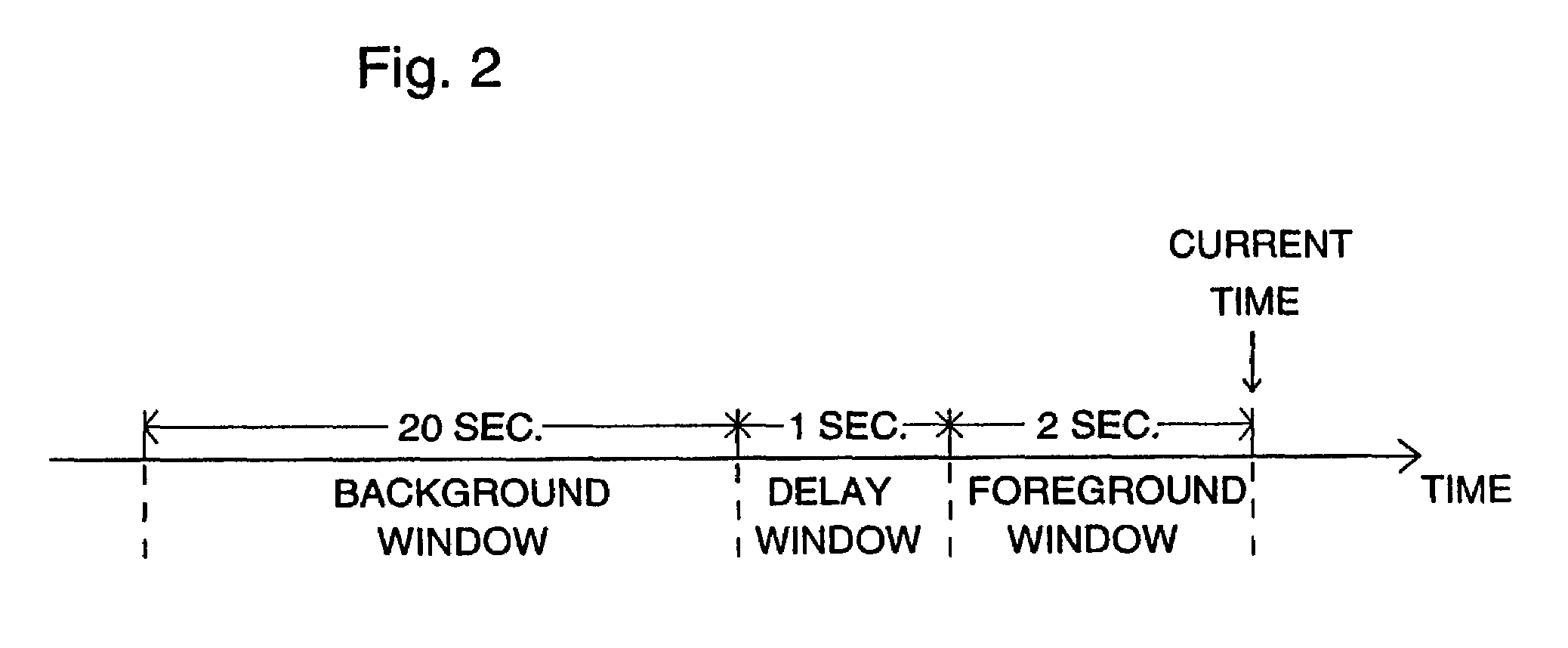System for the prediction, rapid detection, warning, prevention, or control of changes in activity states in the brain of a subject
a technology of activity state and brain activity, applied in the field of neuroscience for analyzing signals, can solve the problems of unnecessarily prolonging the recording length in a specially equipped hospital suite, increasing the cost in a non-effective manner, and expensive procedures, and achieve the effect of lengthening the predictive time of the clinical componen
- Summary
- Abstract
- Description
- Claims
- Application Information
AI Technical Summary
Benefits of technology
Problems solved by technology
Method used
Image
Examples
example 1
[0156]Often subjects have an onset of large energy, primarily low frequency, quasi-periodic epileptiform discharges which occur seconds to minutes prior to the electrographic component of a seizure. Such patterns are rare to non-existent in the interictal state. The following is a description of how the present invention may detect the occurrence of such a precursor:
[0157]First, a linear combination of the signals from relevant sensors is formed in a manner that enables the preservation of the polarity of each discharge so that there is no cancellation through superposition of waves. Then a filter designed to extract precursor spikes with patient-individualized shape is applied to this composite signal. A generic choice of filter for use in this step (when the signal is sampled at 240 Hz), is an IIR filter with PSD as shown in FIG. 9. This filter was designed using a data base of these precursor signals from various patients in a manner similar to that described earlier for the gene...
example 2
[0159]As part of the present invention, it has been found that signal attenuation or “quieting” precedes, by up to tens of seconds, the onset of the clinical and electrographic components of seizure in many subjects. In those that exhibit this preictal quieting, the application of the following preferred method to detect the onset of this attenuation results in a prediction of the electrographic and clinical seizure components.
[0160]For any signal, {Xt, t≧0}, the average signal energy over the interval of time, t1≦t≦t2, is given by
[0161]A(t1,t2)=1t2-t1∫t1t2Xs2ⅆs.
The average signal energy, Et, in a moving time window of length T seconds is given by
[0162]Et=A(t-T,t)=1T∫t-TtXs2ⅆs,
which can be computed recursively and efficiently online using the formula
Et+Δt=Et+A(t,t+Δt)−A(t−T,t+Δt−T)
or
Et+Δt=Et+(Xt+Δt2−Xt−T2) / Δt.
The long-time average energy, Ht, used as an adaptive background value against which energy changes are measured, is given (recursively) by
Ht+Δt=λHt+(1−λ)Et+Δt,
with...
example 3
[0166]It has been found as part of the present invention that, for some subjects, certain sudden changes in the power spectral density (PSD) of the signal may be used to predict an impending seizure onset. For example, a sudden significant drop in the median frequency of the signal (defined in Appendix 2) is a consistent precursor to seizure for some subjects. The following is a description of the preferred method for detecting the occurrence of such a precursor:
[0167]Begin by computing the median frequency of the particular signal of interest in moving windows of length T1 (as described in Appendix 2). Compute a background median frequency using an average of the median frequency values in a moving window of length T2. Then compute the ratio of the background median frequency divided by the median frequency in the current T1 second window. If this ratio exceeds a threshold value C6, a detection of this precursor is immediately signaled. The preferred nominal / non-adaptive choices of...
PUM
 Login to View More
Login to View More Abstract
Description
Claims
Application Information
 Login to View More
Login to View More - R&D
- Intellectual Property
- Life Sciences
- Materials
- Tech Scout
- Unparalleled Data Quality
- Higher Quality Content
- 60% Fewer Hallucinations
Browse by: Latest US Patents, China's latest patents, Technical Efficacy Thesaurus, Application Domain, Technology Topic, Popular Technical Reports.
© 2025 PatSnap. All rights reserved.Legal|Privacy policy|Modern Slavery Act Transparency Statement|Sitemap|About US| Contact US: help@patsnap.com



